I read the following, but I don;t fully understand the meaning of these selectors. Could you please provide an example showing the difference between them? Thx.
Asked
Active
Viewed 264 times
-3
-
This is one of the most basic concepts in CSS. If you look up any guide or lesson on CSS selectors you'll find this explained. – Bram Vanroy Sep 05 '17 at 11:25
-
That's CSS 1 not CSS 3. Also HTML 4, not 5. – Quentin Sep 05 '17 at 11:28
-
@Quentin: I imagine he assumes 3 is part of the technology name, and not a version number. As most people new to web development do. – BoltClock Sep 05 '17 at 11:30
-
1Why the downvotes!!! My answer is correct. – DjaouadNM Sep 05 '17 at 11:46
-
@BramVanroy, the topic on selectors is found in many references. However, not every reference list all possible example. I have checked several references and found no example for this case. – NoChance Sep 05 '17 at 11:51
-
@Quentin, is there a new implementation for this case in CSS3? – NoChance Sep 05 '17 at 11:52
-
@NoChance — No. The implementation of descendant combinators has remained unchanged (although their name has changed). – Quentin Sep 05 '17 at 12:11
-
@NoChance — The official spec has an example for that case: https://www.w3.org/TR/css3-selectors/#descendant-combinators – Quentin Sep 05 '17 at 12:12
-
1A class selector and a descendant selector are found in any basic CSS reference... As Quentin rightfully pointed out, you can also find an overview of all selectors in the spec. – Bram Vanroy Sep 05 '17 at 12:25
-
@BramVanroy, thanks for pointing the duplicate, (although it is not exact duplicate), – NoChance Sep 05 '17 at 12:32
-
@Quentin, thanks for pointing out the example. – NoChance Sep 05 '17 at 12:33
2 Answers
-1
P{
border: 1px solid black;
width: 100px;
}
P.para {
color: red;
}
P .para {
color: blue;
}<p class="para"> <!--P tag with class para-->
sth
</p>
<p> <!--P with child having class para-->
<span class="para">
sth
</span>
xyz <!-- xyz is element of p -->
</p> <!--Or any descendant not just children-->Both "sth" will change with any css rule but "xyz" is not.
Ahmet Karabulut
- 153
- 1
- 12
-
1
-
"P with child having class para" — It selects the descendant, not the paragraph itself. – Quentin Sep 05 '17 at 11:31
-
-
-
-
-
-1
p.para { /* <p class="para">, similar to p[class="para"] */
color:red;
}
p .para { /* any descendants, that have class="para", of <p> */
color:blue;
}<p class="para">
P.Para {}
</p>
<p>
<span class="para">
P .Para {}
</span>
</p>
DjaouadNM
- 22,013
- 4
- 33
- 55
-
1
-
"any `
` with child that has class="para" */" — No. It selects the descendant, not the paragraph itself.
– Quentin Sep 05 '17 at 11:30 -
-
"any descendants of `
` that have class="para"" — That's ambiguous. It's "any descendants, that have class="para", of `
`"
– Quentin Sep 05 '17 at 11:33 -
